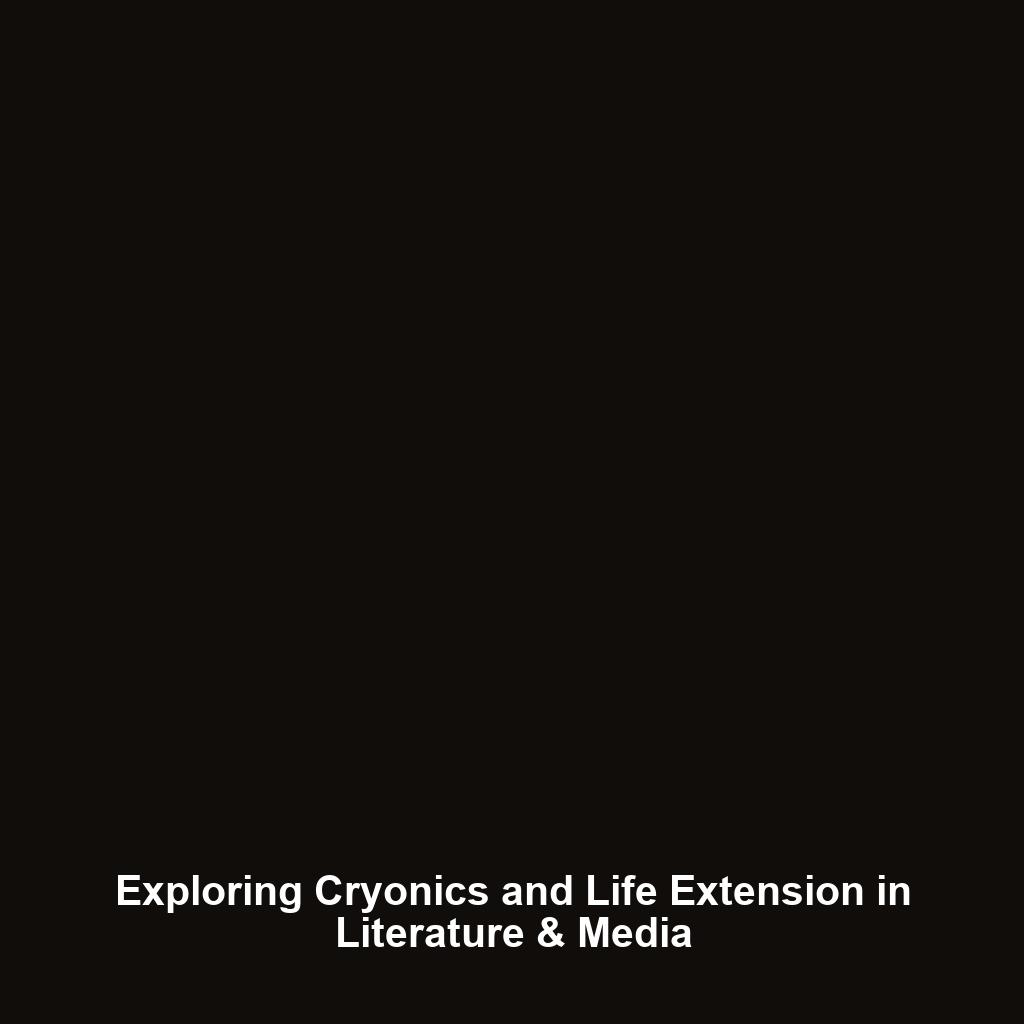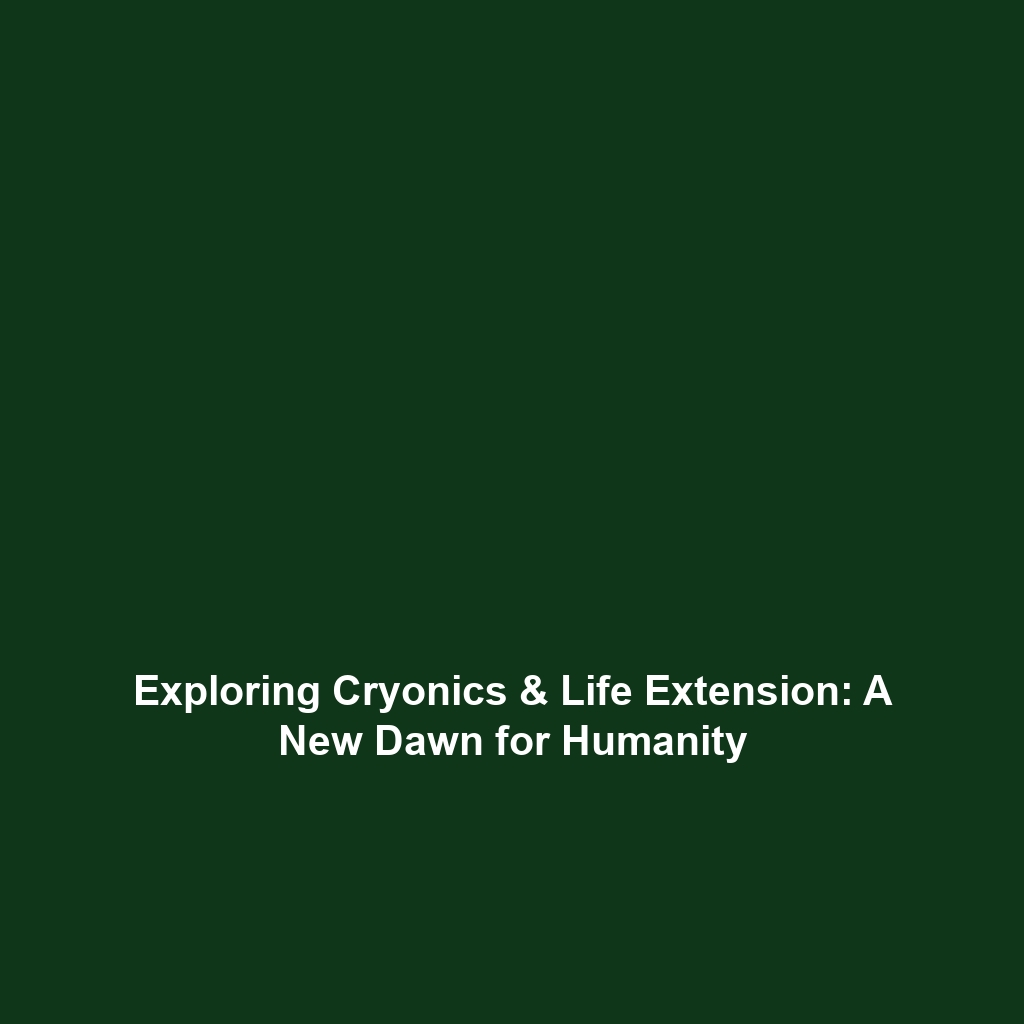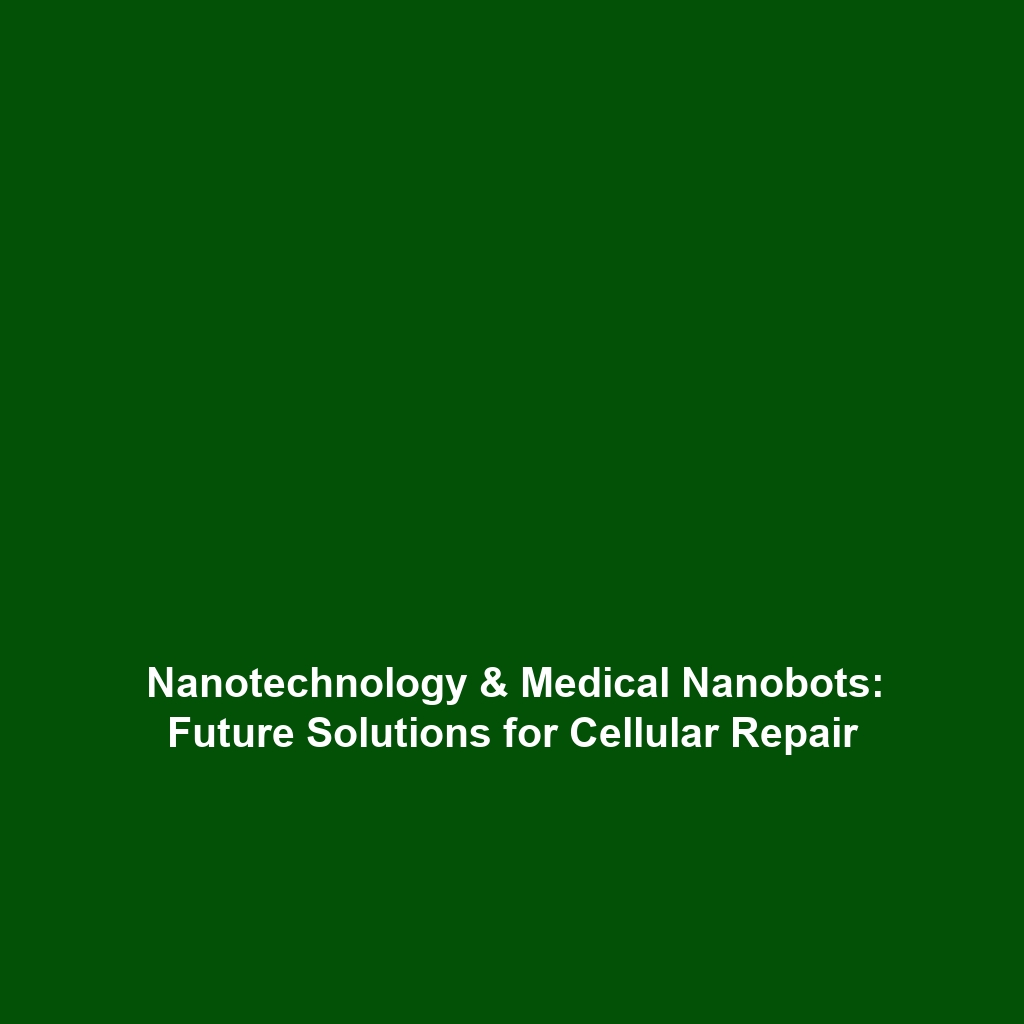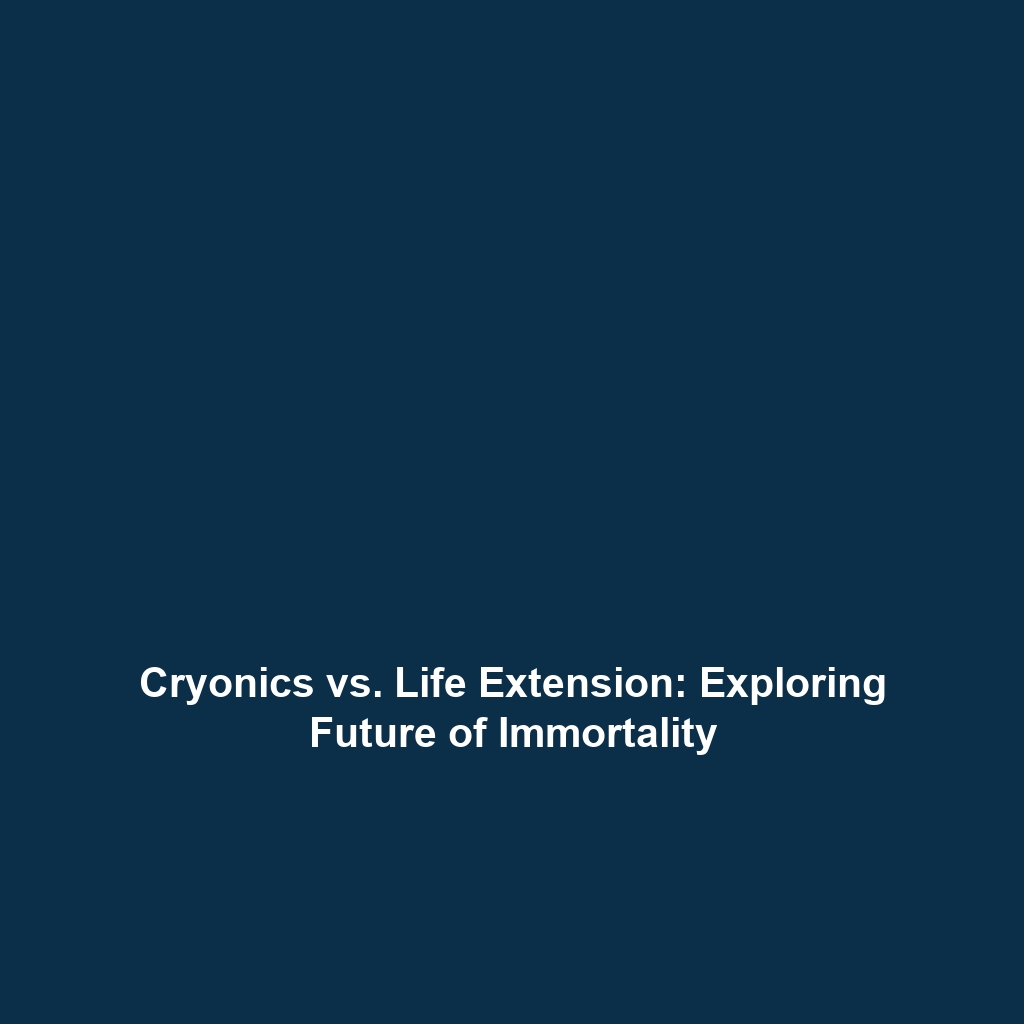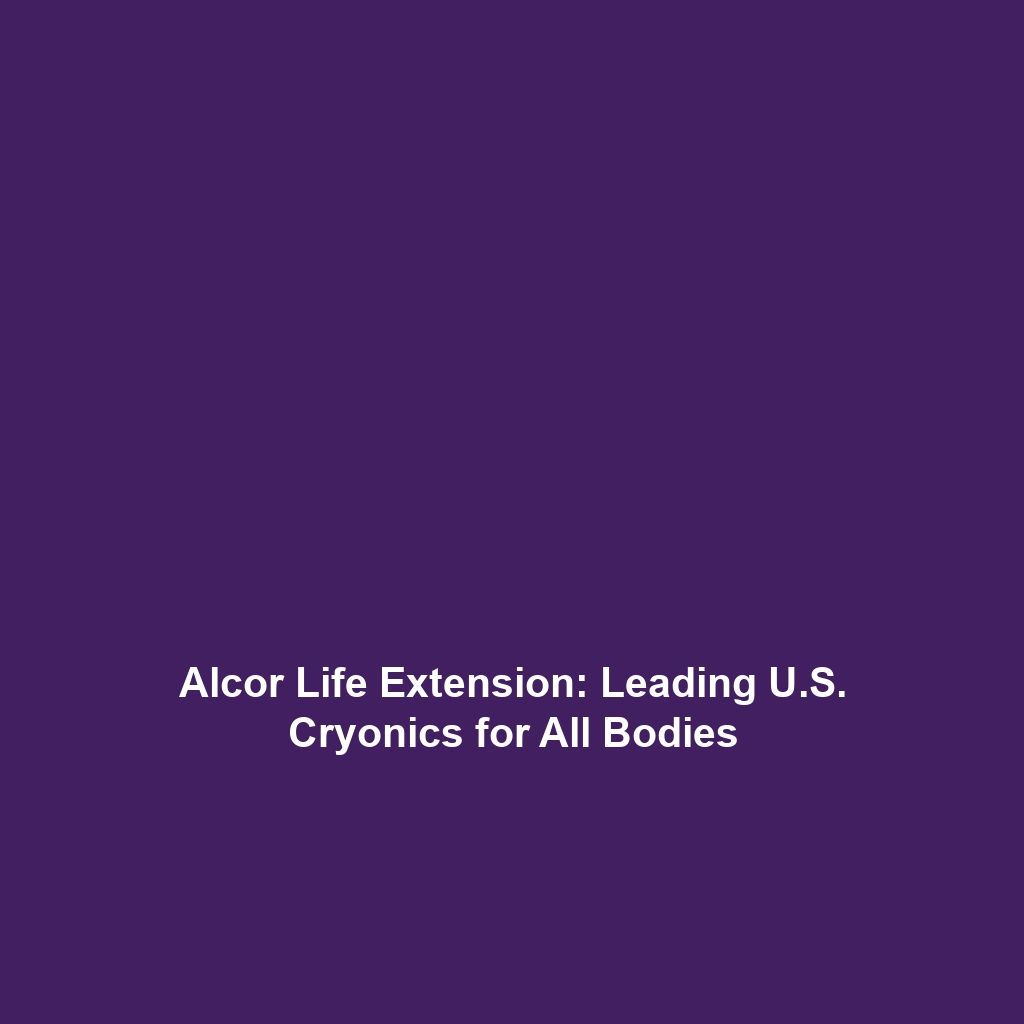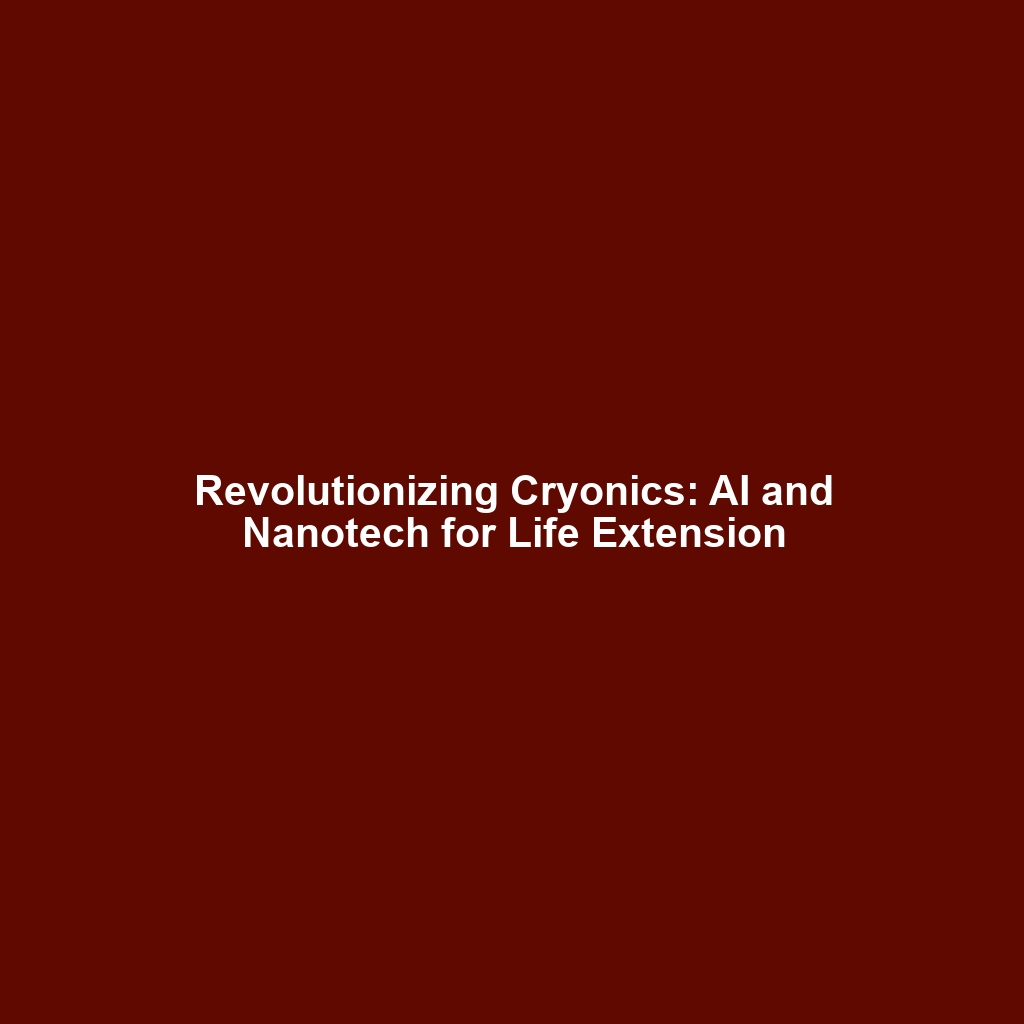Public Advocacy in Cryonics & Life Extension
Public advocacy for cryonics and life extension has emerged as a pivotal movement aimed at increasing research funding, enhancing public awareness, and addressing the ethical implications surrounding life-extending technologies. This article explores the significance of advocacy efforts in the broader context of cryonics and life extension, shedding light on how these initiatives are essential for advancing scientific understanding and societal acceptance of life extension methods.
Key Concepts of Public Advocacy
The concepts central to public advocacy in the fields of cryonics and life extension include:
- Research Funding: Advocates push for increased financial support for research into life-extending technologies, including cryopreservation methods, genetic engineering, and nanotechnology.
- Public Awareness: Public campaigns aim to educate the public about the possibilities offered by cryonics and life extension, addressing misunderstandings and misconceptions.
- Ethical Considerations: Advocates engage in discussions about the moral implications of extending human life, including concerns about equity, societal implications, and the potential for new technologies to change the human experience.
Applications and Real-World Uses
The advocacy surrounding cryonics has led to diverse applications and real-world uses that reflect its importance in the realm of life extension. Examples include:
- Public Engagement: Forums and discussions organized by cryonics advocates bring together experts and the public to foster understanding and engagement.
- Policy Influence: Advocacy efforts have led to legislative discussions addressing the funding of life extension research and ethical guidelines.
- Community Building: Networks of supporters and interested individuals engage in collaborative projects aimed at advancing life extension technologies.
Current Challenges
Despite progress, several challenges exist in promoting public advocacy for cryonics and life extension:
- Public Perception: There remains skepticism about the feasibility and ethics of cryonics, which can hinder advocacy efforts.
- Funding Limitations: Securing adequate funding for research is often difficult, exacerbated by public misconceptions.
- Ethical Debate: Ongoing discussions about the moral implications of life extension pose hurdles for widespread acceptance.
Future Research and Innovations
The future of cryonics and life extension is poised for exciting innovations and research advancements. Key areas of focus include:
- Biotechnology Breakthroughs: Emerging technologies in gene editing, such as CRISPR, may lead to new approaches to life extension.
- Nanotechnology Developments: Future advancements in nanotechnology could revolutionize cellular repair and maintenance, significantly impacting life extension prospects.
- Increased Collaboration: Growing partnerships between research institutions and advocacy groups are expected to yield new insights and funding opportunities.
Conclusion
In summary, public advocacy for cryonics and life extension plays a critical role in shaping research funding, public perceptions, and ethical discussions surrounding life-extending technologies. As the landscape continues to evolve, there is an urgent call for more engagement from both the scientific community and the public. To learn more about the implications of cryonics and explore further topics related to life extension, consider visiting our dedicated pages on ethical considerations and current research initiatives.


